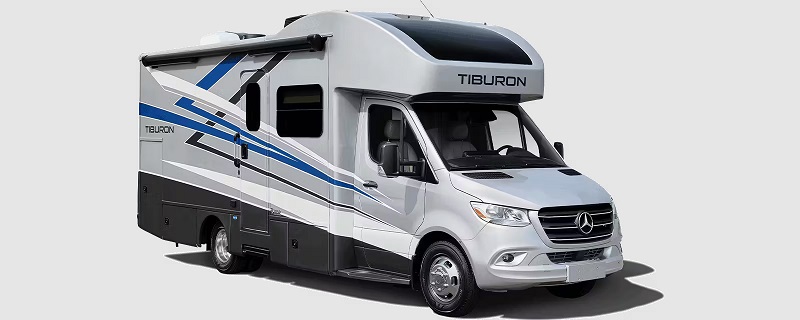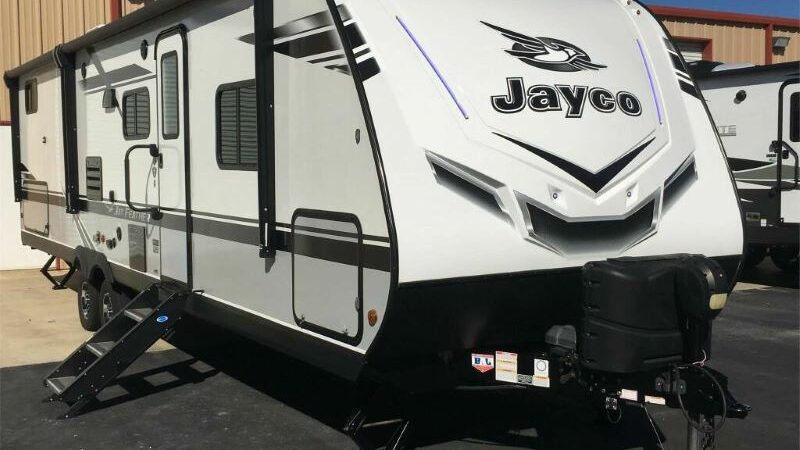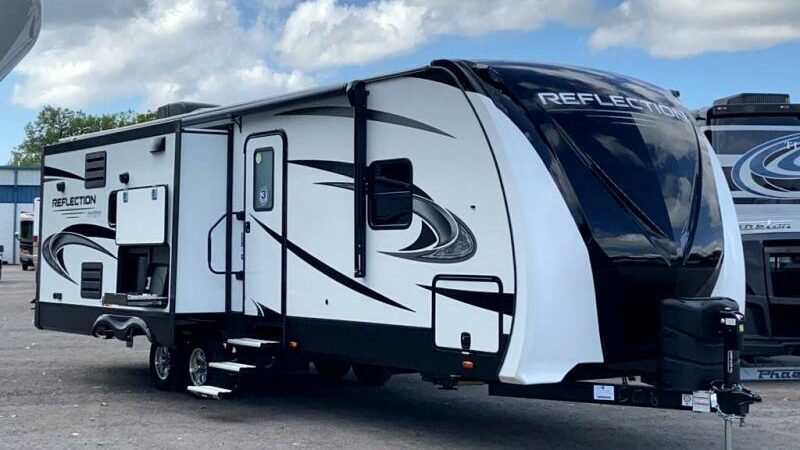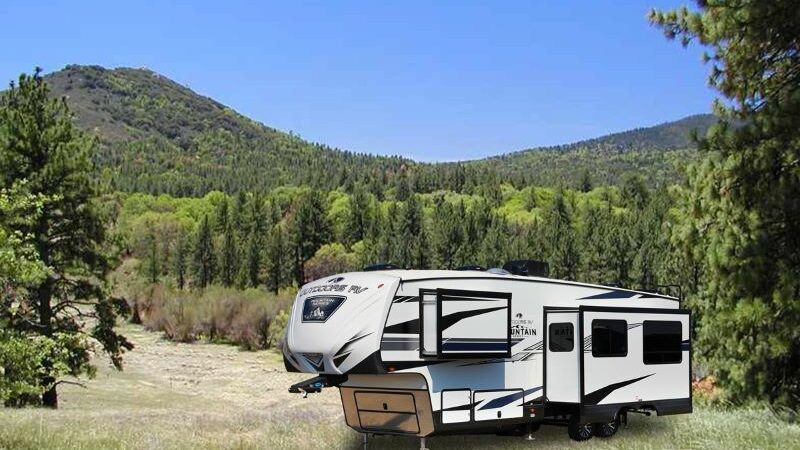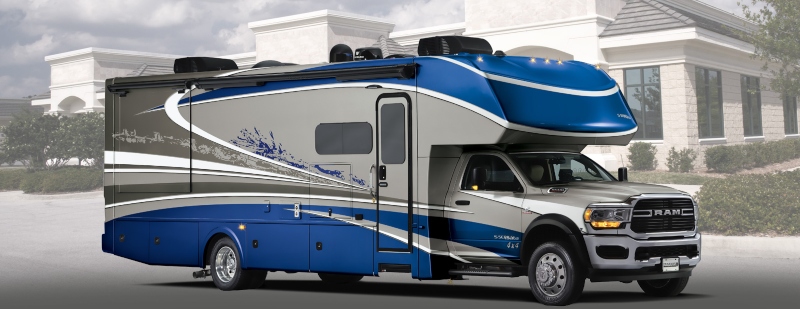Can A 5th Wheel Trailer Disconnect While Driving?
Thanks for your support! If you make a purchase using our links in this article, we may make a commission. And, as an Amazon Associate, I earn from qualifying purchases. See the full disclosure here.
A 5th wheel trailer disconnect in the middle of a highway is a nightmare scenario. Fortunately, in the odd disconnect case, a 5th wheel will decouple long before anyone makes it up to speed. That’s not to say it’s not dangerous, however, and it could happen.
On the bright side, it’s a fairly uncommon thing. Fifth wheels connect to a truck in a far different manner than the traditional hitch and ball. The connection is secure and strong and less likely to disconnect than a ball and coupler hitch.
Like any type of trailer-to-vehicle connection, there is always the chance of a disconnect while underway. This can become a very serious situation very quickly so making and confirming a safe connection is critical.
Is A Fifth-Wheel Better Than A Bumper Pull?
As always, better is subjective. However, fifth-wheels are superior in many ways. They allow heavier weights to be towed, are more maneuverable, safer, and, depending on who you ask, easier to connect and disconnect.
The connection point, in the bed of a truck allows for a more solid center of gravity. The hitch mounts over the truck’s axle, making weight distribution and instability less of an issue.
Using this location as a pivot point also makes maneuvering more easy. A 45-foot fifth wheel can be easier in many situations to back up than a much shorter bumper hitch trailer.
5th wheels do generally require larger trucks and the hitches themselves are more expensive. Bumper pull trailers are often cheaper and are available in shorter models if that’s what you’re looking for.
Which is better? It depends on the person and their needs but there is no denying many of the benefits of fifth wheels over bumper pull trailers.
How Is A 5th Wheel Trailer Connected?
For the uninitiated, you don’t have to worry about the ole ball and hitch method with a 5th wheel. A 5th wheel connection is far different and more complex. Physically making the connection is fairly simple, however, so long as you follow the right steps.
A 5th wheel connection consists of two devices. The first is on the 5th wheel trailer itself, known as a kingpin. The second is in the hitch in the truck bed, containing the top plate, lock jaw, locking bar or latch, and the release handle.
Both the trailer kingpin and truck hitch surfaces have metal plates creating a sliding, ramp-like surface. As you reverse the truck, these two plates help guide the pin into place without being too high or too low.
If there was no give to either component, you would have to have the truck hitch height and trailer pin height perfectly matched. This would obviously make connecting much more difficult.
When the jaws are in place around the kingpin, the locking handle or latch is closed. The locking pin will secure the jaws in place until you’re ready to unhitch the 5th wheel.
One of the first things you learn as a newbie is the “trailer tug test,” a must-know procedure for those with 5th wheels. It’s important to get it right, lest you end up being a statistic in the minority of disconnection incidents.
We’ll discuss the actual hitching process blow as well as some safety checks that are necessary.
Can a 5th Wheel Trailer Disconnect While Driving?
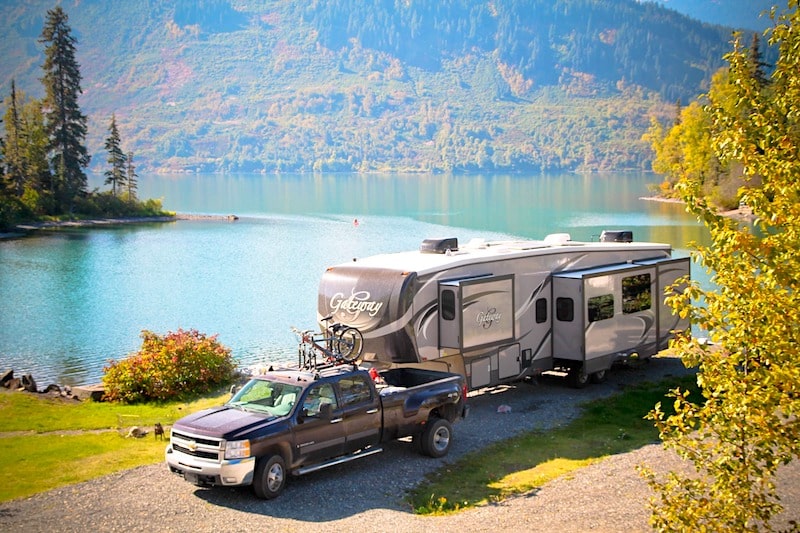
Yes, it certainly can. However, there’s no need to panic about it and think that it will. So long as you hook everything up correctly, it should never be an issue at all. Plus, a trailer tug test will give you that extra bit of confidence in knowing you did it the right way.
It doesn’t take any time at all to do a visual inspection and make sure that the jaws are locked around the kingpin. If there’s one thing that people, even veteran RVers from time to time, get wrong, it’s failing to engage the locking handle or latch in the locking position and placing the locking pin in place.
Once everything is connected and you’re ready to hit the road, take an extra 30 seconds to walk around the hitch and visually check. Every time you make a stop at the gas station or for food, do another visual inspection.
As time goes on, and you get more and more accustomed to pulling a 5th wheel, those visual inspections will become muscle memory. You’ll become so used to the way everything looks when it’s correctly attached you’ll catch anything that’s off.
It’s not very commonplace for a 5th wheel trailer to disconnect on the road but, if it does, it’s almost always a matter of user error. Most veteran RVers will tell you that hitching and unhitching a 5th wheel is not a complicated affair.
Possible Reasons A 5th Wheel Might Disconnect
- The locking Handle is not in a secure position
- The locking pin is not in place
- The jaws didn’t close properly
- You’re not visually inspecting to ensure everything is in place
- You didn’t do a tug test
There are some devices and set-ups that are more convenient to certain RVers, such as side ladder and tailgate ladder installs for the elderly or those dealing with a handicap.
Honestly, climbing up to secure the pin or secure the locking handle is the hardest thing you’ll do. You must check the connection even after doing your tug test to ensure everything is correct.
How To Properly Connect a 5th Wheel
The below checklist may seem a little long, but most veteran RVers go through the process of unhitching or hitching in about 5 minutes, give or take a few. The simple things are where mistakes are made, such as forgetting to pick up the wheel chocks or failing to lower your tailgate when you’re unhitched.
If you want, write all of this stuff down on a small sheet of paper. For first-timers, make your way through the checklist until you get the hang of it. These days, using a smartphone with a note application or virtual assistant is a viable option as well.
5th Wheel Connection Checklist
- Always make sure you are on the most level surface you can find
- Open the jaws using the locking handle or latch mechanism on the lower piece
- User a spotter and reverse until the upper and lower couplings are within a few inches of each other
- Get out of the truck and raise or lower the 5th wheel trailer jacks until the upper and lower plates are level
- Slowly reverse until the plates meet, slide over and under each other, and the jaws lock around the kingpin
- Put it in park and engage the parking brake
- Close your locking handle or latch (depending on the brand and design)
- Insert the locking pin for the locking handle or latch (again, the design and this part of the process depends on brand and design
- Conduct a trailer tug test
- Plug in all of your connectors
- Raise your jacks until you see space between the upper and lower plates, which indicates that the truck is now accepting all the weight
Going through the process with a checklist is the single, best way to ensure your 5th wheel trailer won’t disconnect on you.
It’s the little things that count, such as making sure the latch or locking handle is in place, inserting the locking pin, or lowering and raising the jacks to ensure the weight is on the truck.
Everybody has their own routine, and you’ll probably develop your own order of operations. There’s nothing wrong with that, of course, so long as you cover all the bases and look everything over before you put the truck in gear and head out.
Can A Half-Ton Pull A Fifth-Wheel?
This is a touchy subject with half-ton truck owners, for obvious reasons. After all, most truck owners have half-tons than any other type of truck in the U.S. It’s easily the best-selling, whether it’s because of the lower cost or because of the versatility.
It doesn’t help that there is a huge disparity in towing capability listings for a variety of half-ton trucks. A casual look at a half-ton will show a disparity of up to 4,000 lbs. This means that just because the RV is advertised as a half-ton towable, it doesn’t mean your truck will tow it safely.
It doesn’t help that a lot of RV dealerships advertise 5th-wheel RVs as half-ton 5th wheels, knowing their numbers exclude 90% of half-tons while the remaining 10% are capable of towing them. It doesn’t help that the subset of 5th-wheel RVs for half-tons is a very small list.
The unfortunate reality is (much to the disappointment of half-ton owners everywhere), that most 5th wheels are for 3/4-ton and 1-ton trucks. Plus, when you throw in several of the variables you have to account for, it limits the selection even more.
- EGCWR
- Style of Truck (super cab, crew cab, etc.)
- Type of engine
- The axle ratio
- Wheelbase
- Length of the bed
- How old the truck is
It’s not always the case that a bigger engine or 4-wheel drive versus two-wheel drive gives the truck a higher payload capacity. In fact, in the majority of cases, it’s the exact opposite.
Remember, a more powerful engine is often a heavier engine, reducing the overall payload capacity of the truck.
5th Wheel Options For Half-Ton Trucks
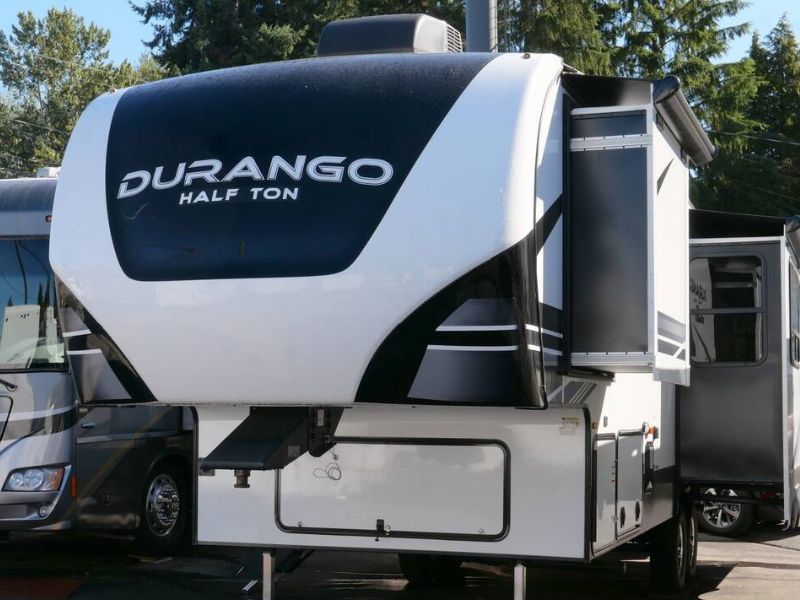
Well, as far as a 5th wheel disconnect while traveling down the interstate is concerned, it’s far more likely to happen if you’re trying to haul something above your weight class. Fortunately, there are a few half-tons out there that are up to the job, but only with a select few 5th-wheel RVs.
Some of these are on the upper end of what’s possible with most half-ton trucks out there. Be very careful to go over both the truck’s and the RV’s specs before you commit.
- Coachmen Chaparral Lite 25RE – 9,800 lbs GVWR
- Escape 5.0 – 5,500 lbs GVWR
- Jayco Eagle HT – 8,000 to 10,500 lbs GVWR
- Forest River Rockwood Ultra-Lite – 7,800 to 10,229 lbs GVWR
- Palomino Puma – 8,800 lbs GVWR
- Starcraft Telluride 251 RES – 9,995 lbs GVWR
- Wildcat Maxx 272RLX – 11,590 lbs GVWR
- Dutchmen Astoria 2503REF – 9,950 lbs GVWR
- Northwood Fox Mountain 235RLS – 12,000 lbs GVWR
The last thing you want is to end up with a brand-new Ford F-150 and limited options of fifth wheels to choose from.
If this is your first time on the market for a 5th wheel your half-ton truck will haul, most of them will carry the half-ton label. However, just remember to be extra cautious about what dealers say is a half-ton and what your truck will actually haul.
Should You Grease a 5th-Wheel Travel Hitch?
If this is all very new to you, the idea of grease making a 5th-wheel trailer disconnect is probably high, in your estimation. The truth is, grease is good for it, especially the plates, where a lot of friction takes place from hitching and unhitching.
Hitches have grease points for maintenance anyway. Once those jaws are locked in place around the kingpin, it’s not going anywhere. Most manufacturers of fifth-wheel hitches provide grease for the hitch head, in between the hitch head and the base of the 5th wheel, the plate, and the jaws.
Lube plates are becoming fairly popular as well, though using one requires you to remove all the grease where the plate will eventually rest (up over, and around the kingpin).
Without grease maintenance, the 5th wheel trailer won’t disconnect necessarily, but it may create binding issues as well as problems turning. It’s also an advantageous maintenance procedure because it will extend the longevity of your 5th-wheel hitch and keep you from having to put it in the shop for expensive repairs.
Besides, we’re talking metal here—steel in particular. Since steel has such a high rigidity, it’s a necessity in these applications, where extreme force and friction are applied to moving, metal parts. Steel contains iron and, because of that fact, will eventually be exposed to the process of oxidation (lots of ugly and damaging rust).
Grease helps to seal the metal away from the outside world as well as lubricate the moving parts. The good news is that you don’t have to go through the process of greasing your 5th wheel all that often.
Most manufacturers recommend a preventative maintenance grease application once every three months.
Final Thoughts About 5th Wheel Trailers Disconnecting
It’s not likely that your 5th-wheel trailer will disconnect for no good reason or from some sort of manufacturer defect. When we see or hear about these things happening, it’s a scary thought, especially if it happens out on the road somewhere.
Fortunately, those are few and far between and mostly due to neglect or failing to go through each point throughout the hitching process and visually check things over.
If you learn your business, work your way through a checklist, and properly maintain your 5th wheel, you should never have to worry about it disconnecting on you. Now, if we can all just remember to lower our tailgates after unhitching, we’ll be on easy street.
Related Reading:
– 10 Best-Built Fifth Wheels You Need to Know About
– Gooseneck vs 5th Wheel Hitches Explained
– 8 Shortest Fifth-Wheel Toy Haulers
– RV Weight Explained – Travel Trailers, Motorhomes, and 5th Wheels
Thomas Godwin – Author and Part Time RVer
Thomas Godwin is a full-time freelance writer with a BFA in Creative Writing, a U.S. Marine, and an avid outdoorsman.
When he’s not writing, he’s raising chickens and Appleyard ducks. Thomas also constructs teardrop campers (attempting to anyway) and kayaks the Blackwater River with his wife, two daughters, and his Dobermans.

Source: https://rvblogger.com/blog/5th-wheel-trailer-disconnect/


